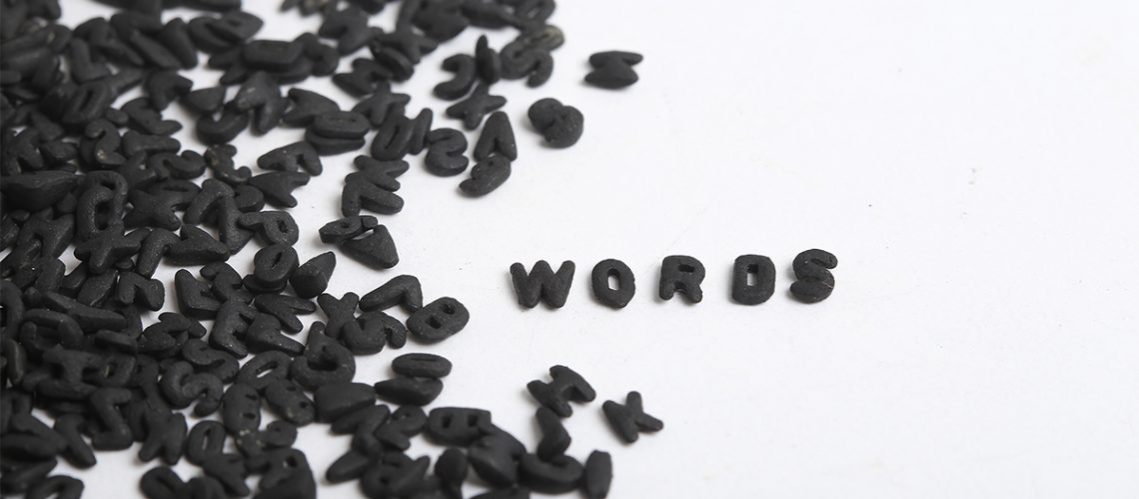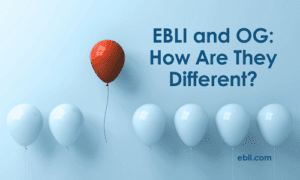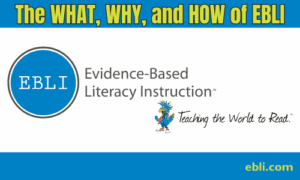R-Controlled vowels. Bossy r. Pirate r. R-influenced vowels. R in charge, rhotic and non-rhotic. What do these terms mean?
These terms are referring to words that have one or two vowels with the letter ‘r’ after them in a word. The following words are r-controlled: far, for, war, earth, ear, bear, dollar, marry, word, and more. There are extensive, and varied, opinions about how to teach these words.
Rhotic and non-rhotic were new terms to me and I thank Clare Wood for expanding my learning by teaching me about them! Check out Clare’s excellent Tiny Steps Make Big Strides blog about these terms, segmenting r-controlled words, and also the backstory on how she and I accidentally met.
Fortunately for me, how I first learned to teach reading was from a speech to print perspective, without rules, so I am not familiar with teaching reading any other way. Speech to print is how I taught my own daughter in the ‘90s. Not long after that, I was trained in Phono-Graphix and became a Phono-Graphix trainer. So, I don’t have any other mindset or experience about how to teach words any differently than by sound. More on how (and why) it is helpful for children and teachers to teach words- especially r controlled vowels – with speech to print instruction later in this blog!
However, the teachers we train and students we teach have been given many explanations about words with r controlled vowels. For the past few decades, I have been trying to understand how R-controlled vowels are typically taught, other than how we teach it, so that students not only understand the concept but can apply it in reading and spelling.
I’m still not actually clear on the answer to that question but here are a few examples that I have found in various books and resources:
- Word study lessons: phonics, spelling, and vocabulary, Grade 3, Fountas and Pinnell, pg. 210:
- List of words:
- Care, cart, heart, heard, beard, herd, torn, burn
- Suggested language to teach: “Some words have a vowel pattern with one or two vowels and r. When vowels are with r, you blend the sound with r.”
- List of words:
- Units of Study in Phonics, Grades K-1, Lucy Caulkins, pg 114-115
- Poem to give to children that includes the words stars, birds, turn, and dark
- Teacher reads the poem as if they are the student making the following errors:
- Stars: /st/ /ă/ /rs/
- Birds: /b/ /i/ /rds/
- Turn: /t/ /u/ /rn/
- Dark: /d/ /ă/ /rk/
- Teacher asks the student, “How was that?” They tell the students “It is sounding like I have trouble with words that contain vowels and an R, am I right? These are mess-ups that lots of kids make. My six year old self isn’t the only one – a lot of you do too! Let’s make sure you know about r-controlled vowels.”
- “Here are some of those words I mess up all the time. Try reading these words. When you see the R after the vowel, heads up, that’s an R-controlled vowel, which means you should probably try it a few different ways to figure out what sounds right”.
- Orton Gillingham Training Manual, 186
- “Today, we are going to learn a new syllable type—an R controlled syllable. What kind?”
- “An R-controlled syllable has one vowel. How many vowels?”
- “The vowel is followed by the letter r. What comes after the vowel?”
- “In an R controlled syllable, the vowel doesn’t say its sound or its name.”
- “Instead, the r controls the vowel and causes it to make a completely different sound.”
- Orton Gillingam for All blog – Below are some excerpts from the blog with examples of how these words are taught.
- R-controlled vowels and examples include:
- Or – or, for, morn, storm, hornet, morsel, border
- Ar – art, card, lard, bombard, farmer, tarnish
- Or and Ar have a kind of long sound to them, meaning you hear the vowel difference. The word Or is easily distinguishable from the word Art.
- Now for the tricky part. These r-controlled syllables can also sound different from word to word. Or can have a schwa sound in words like: doctor, visitor, mayor, error, worst, worth. We don’t say doc-tor, we say, “doctәr.” And the pronunciation reflects it. This is in contrast with the word, Fork, where we clearly hear the or.
- Ar also has a long sound, a schwa sound and can sound like the “or” pronunciation.
- Ar as long: arrow, carrot, barren, parallel, marry, charity
- Ar as schwa: dollar, lizard, standard, collar, popular
- Ar as “or” sound: war, warn, swarm, wart, warm, reward, warden
- Lastly, we look at “ear” (not as a word, but as an r-controlled portion of a word). It also has two ways of pronunciation.
- Ear as a schwa: early, earn learn, heard, pearl, earth
- Ear as “ār” sound: wear, bear, tear, pear, swear
- Words Their Way, Bear, Invernizzi, Templeton, Johnston pg 187
- R-controlled vowels
- a with r: ar (car), are (care), air (fair)
- o with r: or (for), ore (store), our (pour), oar (board)
- e with r: er (her), eer (deer), ear (dear), ear (learn)
- i with r: ir (shirt), ire (fire)
- u with r: ur (burn), ure (cure)
- R-controlled vowels
- R-controlled vowels and examples include:
If you are like me, your head is swimming after reading any or all of the above descriptions. What exactly are they talking about and how do students make sense of it so they can read and write these words?
What is the challenge and what is the simple solution?
The challenge is that to read and spell in English, we must understand the logic of the complex English code that we must access and understand to read and write.
- Here is a simple explanation of the complex English code:
- All words are made up of sounds and letters are symbols that represent the sounds we say
- Sounds are spelled with 1, 2, 3 or 4 letters
- Ex: on, knit, high, though)
- Most sounds can be spelled in many different ways
- Some ways to spell the sound /ai/: pay, pain, they, game, very, eight, great, vein)
- Some spellings represent many different sounds
- The letter ‘s’ represents different sounds in each of these words: sit, has, sugar
When teaching speech to print, students will access sounds first then connect the letters that represent them to the sounds. This is especially helpful for words that are visually confusing. Consider the following lists of words that look similar but sound very different and think about how we can teach them to children so they understand it both to read and spell accurately:
- ‘ear’ represents the following sound(s):
- ear /ea/ /r/ (rhymes with deer)
- earn /er/ /n/ (rhymes with burn)
- bear /ai/ /r/ (rhymes with fair)
- heart /o/ /r/ (rhymes with dart)
- ‘ar’ represents the following sound(s):
- cart /o/ /r/ (rhymes with heart)
- tariff /ai/ /r/ (rhymes with sheriff)
- wart /oa/ /r/ (rhymes with port)
- arise /u/ /r/ (rhymes with surprise)
- polar /er/ (rhymes with bowler)
- ‘er’ represents the following sound(s):
- her /er/ (rhymes with fur)
- there /ai/ /r/ (rhymes with pair)
- series /ee/ /r/ (rhymes with dearies)
- sergeant /o/ /r/ (…the first syllable rhymes with charge)
- ‘or’ represents the following sound(s):
- work /er/ (rhymes with perk)
- for /oa/ /r/ (rhymes with pour)
- ‘ir’ represents the following sound(s)
- girl /er/ (rhymes with hurl)
- virus /ie/ /r/ (…the first syllable rhymes with tie)
- spirit /ee/ /r/ (rhymes with…?)
It is understandable that teaching these words, and knowing what to say when reading or what to write when spelling could certainly be tricky business!
From my experience, here is the most effective, efficient process to teach these words:
- Simplify! Don’t confuse kids with lots of explanations that are not clear and/or applicable.
- Tell the class/student the word. Discuss meaning.
- Segment each sound to the phoneme level
- car – /c/ /o/ /r/
- war – /w/ /oa/ /r/
- polar – /p/ /oa/ /l/ /er/
- word – /w/ /er/ /d/
- form – /f/ /oa/ /r/ /m/
- Put a placeholder for each sound (don’t show the word)
- This is key in speech to print instruction
- We use lines on a whiteboard
- Show the word
- Say and write the spellings on the placeholders for sounds
- c a r
- w a r
- p o l ar
- f o r m
- w or d
- Say and write the entire word without lines.
- Point out patterns
- We do this with explicit instruction in sorts.
- For example:
| a | a | a | a | a |
| fast | carry | car | was | war |
| slap | Mary | farm | about | warmth |
| lamp | Sara | large | what | wart |
| pant | parent | shark | along | ward |
- Point out and discuss
- In a multi-syllable word, the ‘a’ before an ‘r’ often represent the sound /ai/ (same sound as in ate)
- In a single syllable word, the ‘a’ before an ‘r’ often represents /ŏ/ (same sound as in on)
- After a ‘w’, the letter ‘a’ typically represents the sound /oa/ (same sound as in go)
To learn more about this instruction and to see it in action of how we teach these types of words, how we explicitly, effectively, and systematically teach phonics and syllables without rules, and more about teaching the English alphabetic code, be sure to register for this free webinar where I will discuss these topics.





